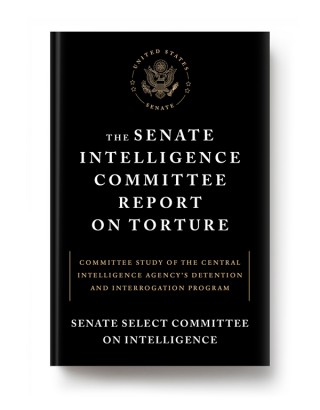December 11, 2015
Has anyone in the White House read the Senate Torture Report?
by Mark Krotov
 On Monday, we wrote about Amnesty International’s day of action in honor of the Senate Intelligence Committee Report on Torture. Amnesty’s campaign—American Torture Story—encouraged the group’s members to remind Congress, the Attorney General, and the Department of Justice that the report’s contents and recommendations remain a matter of national urgency.
On Monday, we wrote about Amnesty International’s day of action in honor of the Senate Intelligence Committee Report on Torture. Amnesty’s campaign—American Torture Story—encouraged the group’s members to remind Congress, the Attorney General, and the Department of Justice that the report’s contents and recommendations remain a matter of national urgency.
But according to The Intercept’s Murtaza Hussain, awareness isn’t the problem—at least, not as far as the DOJ is concerned. In an article published on Wednesday—the one-year anniversary of the release of the executive summary—Hussain reported that the Justice Department has been doing everything it can to keep the full report away from just about everyone who should be reading it. Including the White House.
Despite the passage of 12 months, the actual report, comprising 6,700 pages, still has not been made publicly available. In fact, reading it appears to be prohibited among officials in the executive branch. Nearly a month and a half after the report’s initial release, it had not even been taken out of the package in which it was delivered to the Department of Justice and Department of State, according to government lawyers.
This is not a matter of innocent, bureaucratic mistakes. The DOJ is claiming that it can’t share the report with the Executive Branch and FBI employees due to an ongoing Freedom of Information Act suit filed by the American Civil Liberties Union, which is fighting for a public release of the full report. But as Senators Dianne Feinstein and Patrick Leahy pointed out in a November letter to Attorney General Loretta Lynch and FBI director James Comey, the FOIA case does not actually preclude the DOJ from handing over the full report:
DOJ’s commitment not to return the Study while the FOIA litigation is pending in no way precludes appropriately cleared individuals in the Executive Branch from reading the Study. We urge that you reconsider your position and disseminate the full and final Committee Study to appropriately cleared senior individuals in the Department of Justice and FBI, and instruct other appropriate federal departments to take the same position.
As we’ve previously reported, Feinstein and her staff faced tremendous obstacles and opposition in her quest to produce the report and the executive summary. That process took years, and the release of the summary—despite intense (and excessive) censorship—was seen as a triumph for justice and open access.
But, as Hussain shows, history is now repeating itself. Hussain spoke to Amnesty’s Elizabeth Beavers, who characterized the Obama administration’s stance on the full report as “see no evil, hear no evil”: “for the administration not even to read the whole report, and to look the other way while it is possibly buried or even destroyed, sets a dangerous precedent by excusing major crimes like torture and forced disappearance.”
And if the White House isn’t reading it, we can be certain that full, public disclosure is incredibly unlikely. In January, the Huffington Post’s Ali Watkins wrote a prescient article anticipating government agencies’ great reluctance to engage with the report. “If officials in some of the most relevant, appropriately cleared agencies haven’t laid eyes on it,” she concluded, “does the public even have a chance?”
A year later, Watkins’s question is as depressingly relevant as ever.
Mark Krotov is senior editor at Melville House.